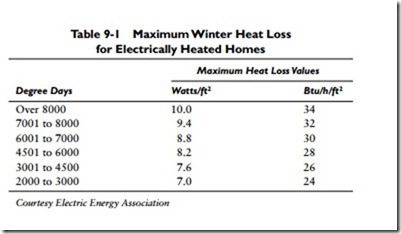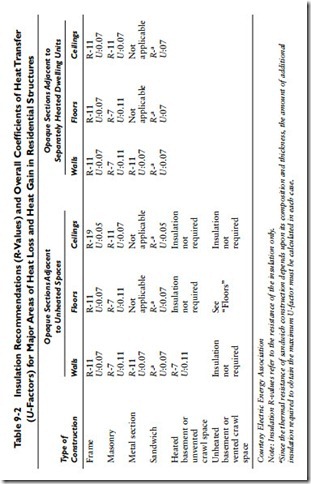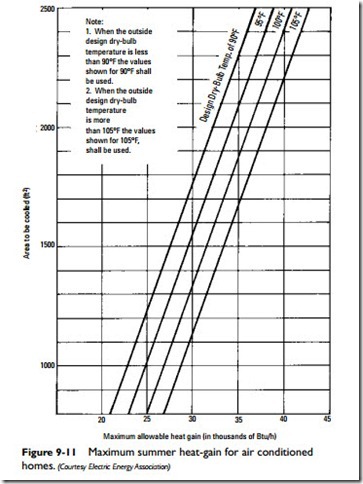Electric Heating and Cooling Controls
In an electric heating and cooling system, the best results are obtained by finding a comfortable thermostat setting and leaving it there. Constantly changing the thermostat setting results in consuming more energy (resulting in increased operating costs) and creates additional wear and tear on the equipment. Experts estimate that for each degree the thermostat is raised above the normal setting, there is a 3 percent increase in heating costs. A comfortable setting for the thermostat depends upon a number of variables, including (1) the type of system, (2) environmental conditions, and (3) your personal requirements. For example, 70°F is usually adequate for a radiant heating system (i.e., baseboard, panel-type heating installations, etc.) in a properly insulated structure. A comfortable indoor temperature setting for air conditioning is usually 76 to 78 F.
A variety of control methods are used in electric heating and cooling systems to maintain kilowatt demand at a level both economical in operation and suitable in performance. The basic controls used for these purposes are:
1. Thermostats
2. Sequence switching devices
3. Load-limiting controls
4. Time-delay relays
Thermostats can be located in each room or on each heating unit to provide decentralized control. A manual switch can be provided with each thermostat to shut off the current if the room is to be unoccupied for long periods of time.
Sequence switching devices are used to switch electrical current in sequence (rotation) from one room or circuit to the next. A load- limiting control is designed to shut off the current to one or more circuits when total electric demand exceeds a preset value. Time- delays are used to restore service after an interruption nonsimultaneously over a period of several minutes so that overloading is avoided. Each of these controls is examined in considerable detail in Chapter 14, “Electric Furnaces.”
Insulation for Electrically Heated and Cooled Structures
Any structure electrically heated and cooled must be properly insulated, or operation costs will be unacceptable. Converting an older structure to electric heat is therefore not recommended unless you have no objection to the additional expense of improving the insulation or you feel you can live with the higher operating costs. Consequently, electric heating is more often considered for new construction.
Insulating a structure that is to be electrically heated and cooled requires greater attention to construction details than do other types of systems; however, the results are well worth the efforts because reduced operating costs and other gains (e.g., the reduction of outside noise and quiet operating characteristics) are soon readily
apparent. Because electric heating and cooling systems require an especially well-insulated structure for efficient operation, recommendations for the required minimum levels of insulation are avail- able from the Electric Energy Association (e.g., its publication Electric Space Conditioning in Residential Structures).
The recommendations found in the following paragraphs will contain references to U-factors and R-values. The U–factor is the overall coefficient of heat transfer and is expressed in Btu per hour per square foot of surface per degree Fahrenheit difference between air on the inside and air on the outside of a structural section. The R-value is the term used to express thermal resistance of the insulation. The U-factor is the reciprocal of the sum of the thermal resistance values (R-values) of each element of the structural section. Table 9-1 gives the insulation recommendations for electrically heated and cooled structures both in terms of R-values and in terms of U-factors (overall coefficients of heat transfer).
Table 9-2 lists heat loss limits for electrically heated structures as recommended by the Electric Energy Association. The values that are listed are expressed in watts and Btu/h (1 watt = 3.413 Btu/h) per square foot of floor space measured to the exterior walls. The assumed infiltration rate on which this table is based is approximately three-quarters air change per hour.
The maximum summer-heat-gain limits for electrically air conditioned homes are indicated in Figure 9-11. These figures are adapted from the FHA Minimum Property Standards for single- and multifamily structures.
aSince the thermal resistance of sandwich construction depends upon its composition and thickness, the amount of additional insulation required to obtain the maximum U-factor must be calculated in each case.
Note
The insulation details, recommendations, and illustrations included in Chapter 3, “Insulating and Ventilating Structures” of this volume meet the minimum requirements for an electrically heated house.


